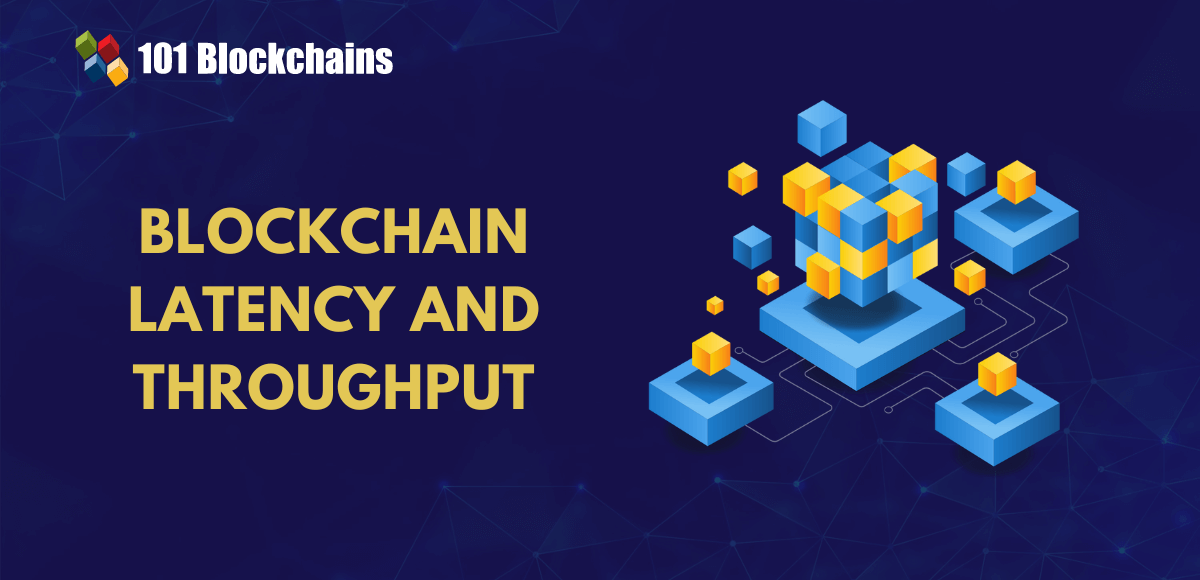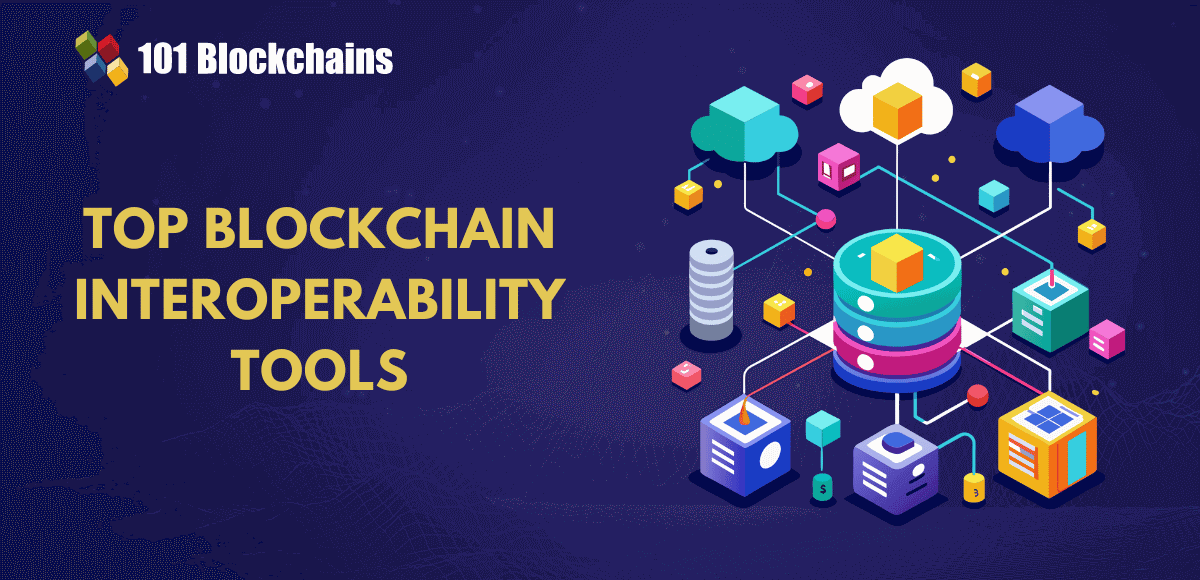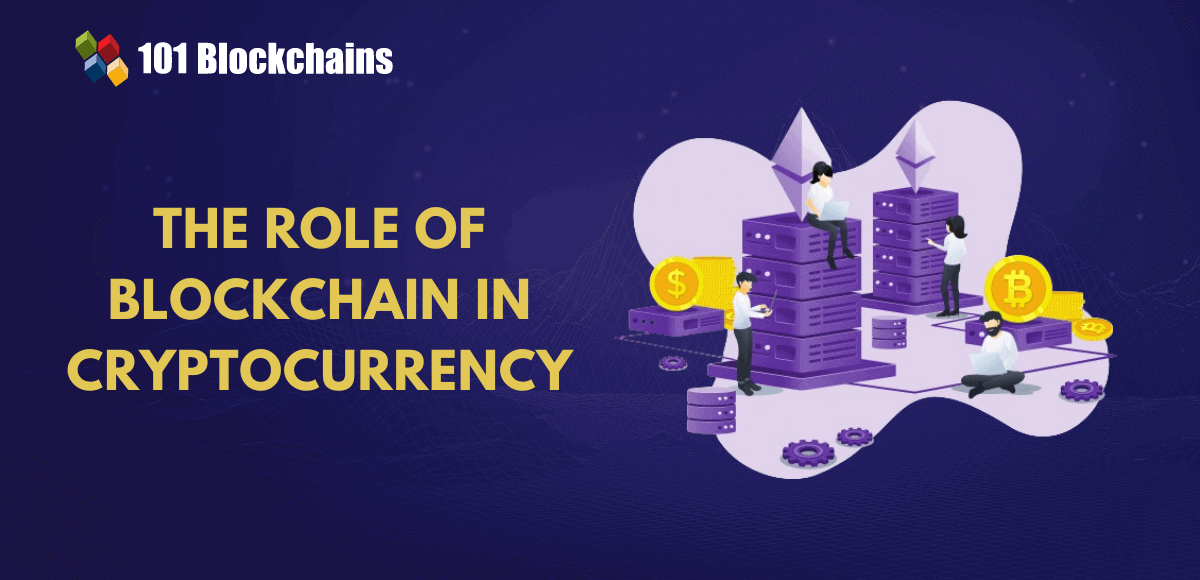Blockchain development has become one of the mainstream technological advancements within a few years. The rise of new blockchain trends has created disruption across different industries with promising improvements. At the current pace of growth, the blockchain market could reach a total capitalization of more than $2300 billion by 2032.
Why has blockchain become one of the top priorities for organizations seeking success with digital transformation? The answer would point to the innovative advancements in the world of technology and the need to stay updated with latest trends in blockchain technology. Blockchain offers the benefits of decentralization, data privacy, and cryptographic security. With the help of smart contracts, blockchain has become an important tool to create decentralized apps.
Blockchain developers must learn about the future trends in blockchain technology to stay ahead of the curve. The domain of blockchain is no longer restricted to cryptocurrencies only, as it serves as the foundation of web3. On top of it, the interplay between blockchain, AI, and IoT has emerged as a notable reason to encourage blockchain development.
Businesses want to capitalize on the benefits of blockchain to improve data privacy and offer better transparency and new customer experiences. Let us take a look at some of the prominent trends that would shape the ways in which businesses approach blockchain development projects.
Most Popular Trends for Blockchain Development in 2024
The role of blockchain in empowering businesses in a continuously evolving market landscape. It is interesting to note that blockchain trends in 2024 will no longer focus on cryptocurrencies. New trends in blockchain development would emphasize the revision of existing perspectives on the utility of blockchain. Here is an outline of the most noticeable trends that will dominate the blockchain development landscape in 2024.
-
Blockchain and Decentralized Finance
The most prominent trend in the field of blockchain development that has continued as a relevant aspect in the domain of blockchain is DeFi. The blockchain development trends in 2024 will focus on development of new DeFi solutions. Different factors would come into play in 2024 for the expansion of DeFi into new horizons. For example, the TVL in DeFi protocols has been growing annually, thereby suggesting that users show their trust in DeFi protocols.
Some of the notable factors that could drive new changes in the DeFi development landscape include AI-powered risk management for DeFi. The answers to “What is the trend in blockchain in 2024?” would point to the ways in which new technologies would reduce vulnerabilities and improve security. Another important trend in the domain of DeFi development is the assurance of better accessibility and user-friendliness with intuitive UI.
In addition, the rise of new types of DeFi solutions, such as DeFi insurance protocols that offer insurance against damages, hackers, and fraudulent attacks. Developers must also keep an eye on the growing demand for cross-chain interoperability that would enhance adoption of DeFi. It is also important to notice the ways in which institutional investors have shown their interest in DeFi solutions.
Build your identity as a certified blockchain expert with 101 Blockchains’ Blockchain Certifications designed to provide enhanced career prospects.
-
Ethereum 2.0 Will Gain Momentum
Ethereum marked a major milestone in the world of blockchain technology in 2020. It shifted from the traditional Proof of Work consensus to Proof of Stake consensus mechanism. However, blockchain trends for developers in 2024 would rely on the maturity of Ethereum 2.0. It can provide better scalability, security improvements, and energy efficiency. On top of it, Ethereum 2.0 also includes support for shard chains to ensure enhanced throughput.
Ethereum 2.0 would be a notable priority for blockchain developers in 2024 as it could provide an alternative to creating scalable solutions directly on the Ethereum blockchain. With the new approach towards consensus mechanism, Ethereum 2.0 would use randomness instead of hash power to reduce block sizes. It would ensure that validators can run their node on basic hardware with the assurance of faster transactions and better scalability.
Want to learn more about Ethereum Technology? Enroll now in the Ethereum Technology Course
-
Layer 2 Smart Contracts and Enhanced Scalability
The growing adoption of layer 2 smart contracts is a formidable trend in the domain of blockchain development. Layer 2 smart contracts have emerged as the most noticeable trends in blockchain development to improve scalability. Ethereum and Bitcoin blockchains are layer 1 networks, albeit with setbacks in terms of scalability. Layer 1 blockchains have been affected by scaling problems as the demand for dApp development has been growing continuously.
Layer 2 smart contracts have become a top solution to the scalability issues in blockchain networks. The layer 2 smart contracts work as an overlay framework that provides notable improvements in scalability. The advantages of layer 2 smart contracts emphasize the expansion of the range of utilities that blockchain developers can explore with smart contracts.
It would also help in avoiding the impact of limitations associated with the basic infrastructure and would encourage developers to focus on innovation. Apart from scalability enhancements, layer 2 smart contracts also pave the path for new applications and practical use cases.
Understand the complete smart contract development lifecycle and development tools with this Smart Contracts Development Course.
-
Rise of Enterprise Blockchain Adoption
Blockchain developers must also keep an eye on the rising interest in the use of blockchain for business use cases. The predictions for future trends in blockchain technology have been revolving around the growth of momentum in business use cases of blockchain. Businesses want to capitalize on blockchain to achieve the benefits of security enhancements, enhance customer trust, and ensure faster transaction execution.
Blockchain offers an immutable technology that ensures that users have confidence in blockchain solutions. All the data and transactions in the blockchain network are completely transparent. With the benefits of transparency, blockchain technology provides multiple benefits for different industries. Some of the notable industries that have leveraged blockchain technology include banking, supply chain management, and healthcare.
Another significant factor that encourages the adoption of blockchain by businesses in different sectors is the popularity of smart contracts. The blockchain development trends in 2024 will revolve around the use of smart contracts for business. Developers would have to use smart contracts to deliver different advantages such as expense reduction, removing intermediaries, and simplifying complicated procedures.
Interestingly, some of the top names in the business world have showcased perfect examples of using blockchain in business. For example, Walmart uses blockchain technology to track the movement of food and groceries from farm to table with transparency. IBM has developed new approaches for using blockchain to improve supply chain management.
Microsoft has also experimented with the use of blockchain to create new identity management systems alongside improving security and privacy. Another popular example of businesses using blockchain technology is Amazon. The tech giant utilizes blockchain to improve its cloud computing services alongside offering better scalability and security.
-
Regulations for Blockchain and Cryptocurrencies
The list of answers to ‘What is the trend in blockchain in 2024?’ for blockchain developers is incomplete without emphasizing the impact of regulations. Cryptocurrency and blockchain regulation has emerged as a prominent trend in 2023 with promising improvement in maturity of regulations.
The impact of regulations in the domain of blockchain and cryptocurrencies would help secure blockchain solutions and fight against security risks. On the other hand, jurisdictional challenges have created difficulties in adoption of regulations in the blockchain landscape.
The consistent push for regulations in blockchain and cryptocurrencies has finally led to some tangible results. For example, the US crypto plan introduced in 2021 showcases the significance of federal intervention in the blockchain landscape. The US government pushed $1.2 trillion into a bipartisan infrastructure for encouraging blockchain and cryptocurrency adoption.
The infrastructure introduced implications for crypto tax reporting, thereby improving regulatory supervision of cryptocurrency and blockchain network activity. In addition, leaders in the 2023 G20 summit emphasized the introduction of a reporting mechanism for cryptocurrency assets. It reflects on the possibilities of a global endeavor for regulation of blockchain solutions and cryptocurrencies.
Start learning Blockchain with World’s first Blockchain Skill Paths with quality resources tailored by industry experts Now!
-
Tokenization of Real Estate Investment
The top trends for blockchain development in 2024 would also draw attention towards rising investment in tokenized real estate. Developers could tap into the potential of blockchain technology to support real estate companies in exploring new avenues for growth.
As one of the prominent blockchain trends in 2024, real estate tokenization would help companies offer fractional ownership of properties. With the new blockchain-based apps, the real estate sector could capitalize on advantages of democratizing real estate investment.
Blockchain could help in utilizing tokenization to divide the property value into different tokens that you can trade across various platforms. Investors could use the advantage of blockchain for buying and trading tokens that represent properties and also find easier access to the domain of real estate. With the help of blockchain, investors can capitalize on the benefits of transparency and security for their investment. Real estate agents and companies could also use blockchain to create apps that attract a broad range of investors.
Want to understand the fundamentals of tokenization and its practical implications? Enroll now in the Tokenization Fundamentals Course
-
Discovery of New NFT Utilities
Non-fungible tokens have been one of the notable topics of discussion for blockchain developers. The unique assets based on blockchain networks gained immense popularity after the million-dollar auctions of NFT artwork and collectibles. As the emphasis on blockchain development trends becomes more prominent, it is important to look for the ways in which NFTs can serve new utilities. Blockchain developers would have to adapt to the requirements of implementing NFTs for new use cases.
NFTs have been gaining momentum in different industries in a continuously changing market environment. As a matter of fact, the search inquiries for NFTs have grown by huge margins. The potential of NFTs for serving use cases in digital identity management and creation of independent economies in virtual worlds.
For example, future trends in blockchain technology emphasize the use of NFTs in the gaming industry. NFTs can serve as crucial assets for offering in-game benefits. For example, one of the notable participants in the gaming industry with a relationship with NFTs is ImmutableX, which generated almost $87 million in NFT trading volume in 2022.
The fashion industry has also started embracing NFTs, with popular names such as Nike and Prada serving as frontrunners. Prada utilizes blockchain technology to create unique NFT collections to offer a new definition of luxury fashion. The NFT collections can provide customers with access to limited-edition items and special events. Furthermore, NFTs have also expanded into other sectors, such as real estate, with promising improvements in operational efficiency and liquidity.
Excited to develop an in-depth understanding of solidity’s best practices and the tools needed for developing and testing an NFT marketplace, Enroll now in the NFT Development Course
-
Web3 Revolution
The most crucial trend in the field of blockchain development that would influence the work of blockchain developers is web3. Blockchain serves as a major tool for shaping the web3 landscape with the advantages of decentralization, immutability, and security. The description of trends in blockchain application development would be incomplete without references to metaverse, NFTs, and DeFi. In addition, blockchain would also coalesce with other technologies such as AI, ML, and IoT to develop the foundations of web3.
Blockchain-based web3 apps would become the norm for embracing the benefits of decentralization in our diverse digital experiences. Web3 apps would offer more control to customers and reduce the possibilities for monopoly by tech giants. Web3 can ensure trustless interactions, digital asset ownership, and transparency in governance.
In a way, web3 would shift the emphasis on use cases of blockchain beyond cryptocurrencies. Blockchain developers would have to work on new and innovative solutions that offer better accessibility alongside user-friendly interfaces. The adoption of web3 would also ensure improved control of users over visibility, ownership, and management of their digital assets.
Learn about the potential use cases for web3 technologies and identify the benefits, challenges, and risks of web3 with Certified Web 3.0 Professional Certification
Final Words
The rise of new trends in blockchain is not a new highlight for industry experts. On the contrary, the blockchain ecosystem has been witnessing new trends emerge every year. At the same time, some trends have maintained their influence on the blockchain landscape and will continue to be relevant for blockchain developers in future.
For example, blockchain developers would have to worry about the development of new DeFi solutions and ensure alignment with blockchain and crypto regulations. The continuously growing demand for blockchain solutions among businesses and the adoption of new NFT utilities have come up as new highlights in the blockchain landscape. Explore the fundamentals of blockchain technology and how blockchain developers could adapt to the emerging changes in the industry right away.
*Disclaimer: The article should not be taken as, and is not intended to provide any investment advice. Claims made in this article do not constitute investment advice and should not be taken as such. 101 Blockchains shall not be responsible for any loss sustained by any person who relies on this article. Do your own research!








